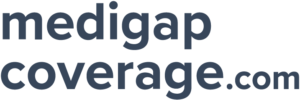How do I know I’m eligible for Medicare?

Most people in their early sixties know that Medicare is on the horizon and want to feel confident they will make the right decisions. Eligibility is a basic concern. We’re going to walk you through everything you need to know to successfully sign up for Medicare Part A, Medicare Part B, and Medicare Part D coverage. Rest assured that the requirements are reasonable, and that the majority of seniors qualify for automatic enrollment.
Part A Eligibility
Part A and Part B are known as Original Medicare, and these offer the core benefits of the Medicare program. Your essential health care needs are covered by both, and Part A will help take care of your comprehensive inpatient needs if you are hospitalized.
In general, you are eligible if:
- You are 65 or older
- You are a U.S. citizen or a permanent resident of at least 5 years
- You have end-stage renal disease (ESRD)
- You have amyotrophic lateral sclerosis (Lou Gehrig’s disease or ALS)
To be enrolled automatically, you must have:
- Started receiving Social Security benefits
- Already been getting Railroad Retirement Board (RRB) benefits
- Worked in the U.S. for at least 10 years (40 quarters)
If you’re under 65 with a disability, you qualify automatically after 24 months of Social Security or RRB disability benefits. Part A is premium free for everyone who qualifies for automatic enrollment. For those who don’t qualify, Part A can be purchased for $506/month in 2023. If you are married and didn’t meet the work requirement, you are automatically eligible as long as your spouse worked for at least 10 years.
Qualifying for Part B
Eligibility requirements for Part A carry over to Part B. Essentially, if you qualify for premium-free Part A, you are automatically eligible for Part B. And, if you have ESRD or ALS, you are able to get Part B before turning 65.
As with Part A, receiving Social Security or Railroad Retirement Board benefits means that you’re enrolled automatically in Part B.
Premium cost is one area where the two parts differ: there is a $164.90 premium for Part B, unlike Part A, which demands no premium payment.
It’s important to note that there is no federal requirement for seniors to get Medicare Part A or Part B. It’s just a grown-up decision which can save you from what could be steep hospital costs or out-of-pocket medical fees.
And what about Part D?
This one is simple. If you have Part A or Part B, you’re automatically eligible for Part D — the requirements are the same across the board. Like Part B, you owe a monthly premium which is determined by the plan you choose.
The trick to discovering what your premium will be is to provide the plan you’ve selected with as much information as you can regarding your location, pharmacy of choice, and the specific prescription medications you take.
Use the eligibility shortcut.
The agency that runs Medicare makes it easier for you to find out where you stand in terms of eligibility with a secure online tool: https://www.medicare.gov/eligibilitypremiumcalc/ You can also use it to calculate your what your premium costs are going to be. The site doesn’t save your information, so you can use it confidently.
Call a specialist at medigapcoverage.com powered by pollen with any questions about Medicare eligibility or anything else you need to know. We can help simplify finding your perfect plan.
Still confused? Call us!
We’re here at 833-245-0614 to answer any questions, and ready to help with any issues you might have with an insurer through the enrollment process.
Table of Contents
FAQs
I qualify for automatic enrollment in Medicare. Does that mean my premiums are free?
Medicare Part A is free for everyone, but Part B has a premium for 2023 of $164.90
I haven’t earned the requisite 10 years of taxable income to qualify for Medicare. Is there any way I can get it regardless?
Do I risk some kind of fine or penalty for not enrolling in Medicare when I turn 65?
There is no federal law compelling you to join this entitlement program.
Is there a separate eligibility requirement for Medicare Part D?
No As long as you’re enrolled in Part A and Part B, you can sign up for Part D.
What are the best Medicare supplement plans?
- Best overall Medicare supplement for new enrollees: Plan G.
- Best overall Medicare supplement before 2020: Plan F.
- Best low cost Medicare supplement: Plan K.
- Best alternative to Plan G Medicare supplement: Plan N.
What is a Medicare supplement plan?
Medicare Supplement policies are private health insurance designed to cover gaps in Original Medicare. They are also known as Medigap plans. These take care of costs such as copays, coinsurance, and deductibles which can become expensive if you need regular care from a doctor or hospital. If you need medical care while traveling outside the U.S., you can buy Medigap policies to help cover those costs. As a supplement to Original Medicare, you’re required to have Part A and Part B before you canget a Medigap policy. This way, Medicare is responsible for the Medicare-approved costs of the covered care, and the remainder is covered by your Medigap plan.
What is the most expensive Medicare supplement plan?
Optimal coverage comes with higher costs, making Plan F the most expensive Medigap plan. Plan F is known as “first-dollar coverage” and it takes care of everything provided during a doctor or hospital visit. Your only responsibility is for dental, vision, medications, and equipment, such as hearing aids.
Why is Plan F being discontinued?
The Federal government ended the Plan F option for new enrollees last year to keep the healthcare system from being overused by patients who had their deductibles covered. The next best coverage after Plan F is Plan G.
Is Plan G better than Plan F?
Medigap Plan G offers every advantage of Plan F except for the deductible, which you have to cover. Because it isn’t as comprehensive as Plan F, Plan G is more affordable.
What is the best and cheapest Medicare supplement insurance?
For people who don’t go to the doctor often, Plan K is worth considering. It is the most affordable because it provides just 50% of Medicare Part B coinsurance, the Part A deductible, blood, skilled nursing, and Part A hospice costs. For comparison, Plan G and others offer full coverage of these expenses, and more.
Is Medicare supplemental insurance worth it?
It’s hard to argue against plans which cut your traditional Medicare costs. For most people, having the extra coverage these supplemental plans provide is common sense, unless they want the specific features of a Medicare Advantage plan.
Do I really need supplemental insurance with Medicare?
Most people would benefit from not having to pay out-of-pocket to stay healthy. Medicare supplement insurance or a Medicare Advantage plan offer vital savings now, but are indispensable should a catastrophic health issue occur.
What is the most popular UnitedHealthcare Medicare Supplement plan?
Of the 10 Medicare-approved Medigap plans, Plan G and Plan N are the most popular. Plan F is no longer available to new Medicare enrollees as of 2020, but it is still popular among people who bought this plan prior to 2020.
How much does Medigap insurance cost?
- Plan F$128–$342
- Plan F (high deductible)$22–$88
- Plan G$106–$325
- Plan G (high deductible)$29–$58
Who qualifies for Medigap?
Before getting a Medicare supplement plan, you need to be enrolled in Medicare Part A (hospital insurance) and Part B (medical insurance). People with Medicare Advantage Plans who want to go back to Original Medicare can buy a Medigap policy prior to switching.
Is Medigap insurance worth the cost?
The security of having lower or no out-of-pocket healthcare costs can offset the premiums you’ll have to pay for whichever Medigap plan you choose, which vary depending on the benefits offered.
How Much Is Medigap per month?
The national average cost for Medicare Supplement Plan F is $1,824 annually, which is $152/month; Medigap Plan G will cost you around $143 per month.
Is Plan G the best Medigap plan?
Since Plan F was discontinued for new enrollees as of 2020, Plan G offers the most coverage for people 65 and older. It has a lower premium than Plan F and duplicates its benefits, except for the Part B deductible.
Is it better to have Medicare Advantage or Medigap?
It depends on your specific needs, but for most people a Medigap plan is very useful in supplementing the coverage of Medicare Part A and Part B. A Medicare Advantage plan is an affordable way to get healthcare coverage not offered by Original Medicare.
What is the most popular Medicare supplement plan?
Historically, Plan F has been the most popular because it covers all the out-of-pocket costs Medicare does’t pay for. This includes the 15% extra charge billed by providers who do not take Medicare as full payment.
Does Medigap cover prescription drugs?
Since January 1, 2006, no Medigap policy came with prescription drug coverage. You have two options to get covered, enrolling in either a Medicare Prescription Drug Plan (Part D) or a Medicare Advantage plan.

